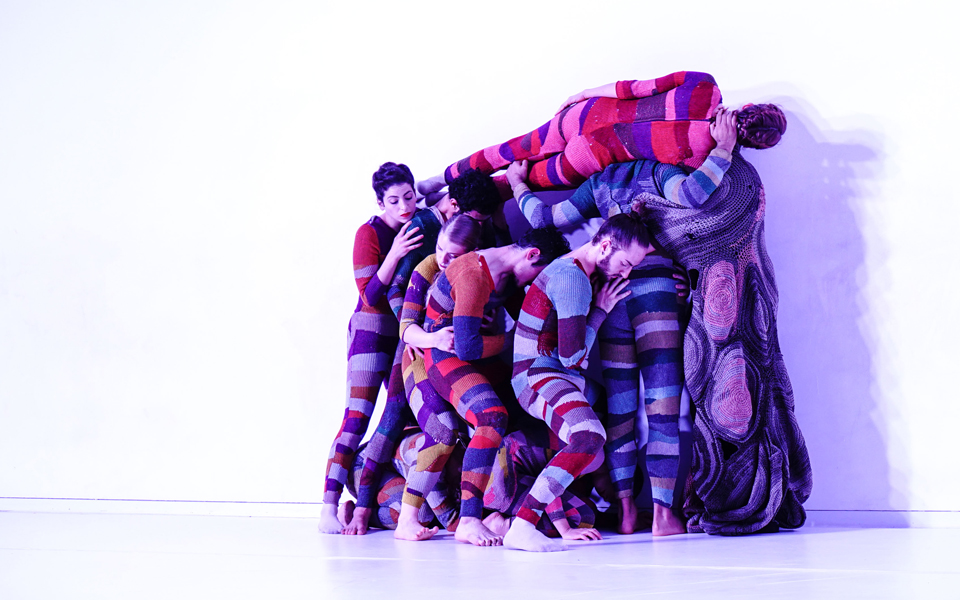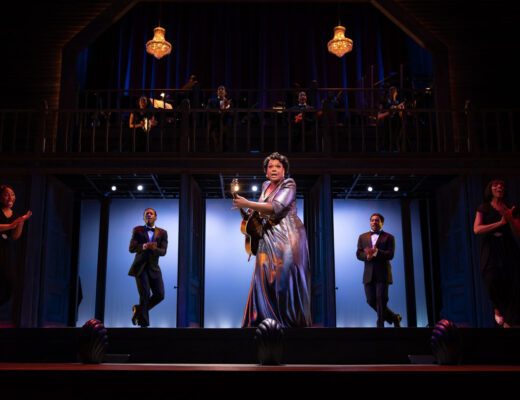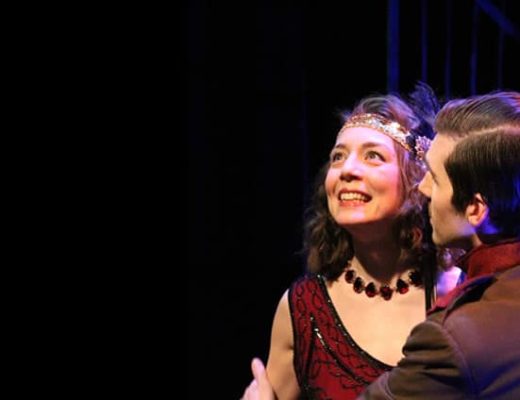The eyes of the world have turned to Israel this week following the death of Shimon Peres. Twice the prime minister of Israel and a member of the Israeli parliament for more than thirty years, Peres was a winner of the Nobel Peace Prize, and a prominent advocate for peace. Peres’ death has put Israeli politics in the news this week, but Israeli culture is also having a moment here in D.C. – live and on film.
This Sunday you can see Ohad Naharin, the founder of the Gaga dance movement style and Batsheva Dance Company, in the award-winning documentary about him — Mr. Gaga – at the Jewish Film Festival. And the following Thursday, the Inbal Pinto & Avshalom Pollak Dance Company will perform their choreography Wallflower live in a one night stand at The Clarice.
Inbal Pinto got her start as a dancer with Ohad Naharin/Batsheva in the early 1990s. Joining forces with Avshalom Pollak – an experienced actor – the company creates distinct artistic visions. I spoke with Pinto by phone to ask her about the Company’s upcoming performance at The Clarice, the piece the company will be performing – Wallflower – which was first performed at a museum, and the legacy of Shimon Peres.
Jonelle Walker: What was the inspiration for Wallflower? What generated it among the company?
Inbal Pinto: First of all, this piece was created for the Tel Aviv Art Museum and, so, it was basically the first time we did a piece outside of a normal stage and the fact that it’s in the museum has a big effect on the process of the creation, of building it. The way that we approached it was using our bodies in the craftiest ways. Like, imagining our bodies like a plastic artist using his tools and materials. Refining our bodies as texture, as different textures. Almost like imitating strange combinations of materials, and how we define those in our own bodies … Of course, we are talking about human beings, so that creates all kinds of images when you are using your body as a metal … it defines your communication with others.
I’m telling you bits and pieces of the process, but it was really a huge investigation on that side. On the other side … during the process, we were working in total quiet. In the end of the process, we brought three Japanese musicians who wrote and, actually, played live onstage with us. It was also something very unique to this process, which brought something different with the movement and the music.
What is the usual devising process when the company is developing a piece?
Inbal Pinto: Actually, we don’t have a “usual.” Every process is a journey and we are trying to challenge ourselves to bring ourselves into places that we’ve never been before. Of course, it’s only within the frankness of your own brain or your own way of thinking. But, we are trying to enlarge this frame and try challenges, things that we would never do to see how we would react in that field. Like, doing tasks you’ve never done before and seeing what the challenge is.

Dancers of the Inbal Pinto and Avshalom Pollack Company performing ‘Wallflower’ in 2015. Photo by Daniel Tchetchik.
What prompted developing Wallflower for the Tel Aviv Art Museum, in particular?
Inbal Pinto: For years we wanted to create something for the museum because there is something about our work that sticks in a visual way. So, we were really attracted to those exchanges of art and dance, and also breaking the form of how we are performing. It was the curiosity of how it would be and the stimulation of being in the museum and working in the museum. I think everything is influencing us in every piece, but the fact that were there in the museum was a huge influence on the piece.
After performing the piece at Tel Aviv Art Museum, how have you adapted Wallflower for more traditional spaces on tour?
Actually, we did it once more at Modern Art Museum of Tokyo and so that was the second venue. We did it three times in the museum in Tel Aviv. Twice in the sculpture garden and once in another venue, a bigger space where we collaborated with a video artist. Then in Tokyo we took part in a group exhibition, [Seeking New Genealogies]. Then we did it in normal theatres, like with a stage and an audience. I think this is how we are going to present it in the US. It has its own power. It’s different, but it works. It works beautifully on stage.
The dancer’s costumes for this piece, colorful knitted body suits, are so interesting. How were those created? What is their significance and what challenges do they pose?
The costumes were a collaboration with two textile artists. It has so many layers of thinking, but it’s basically like another skin. It is almost like a map. Or, Picasso, during his Cubist period, used to take a face, for example, and distort it, put it in different locations, so you couldn’t tell which way she was looking …. It’s like breaking the body. I wanted to see the connection of different bodies. Almost like you can’t see where the first one ends and the second one begins. With Judaism, it’s more like the costume you wear in heaven or the afterlife … It’s almost like a map of your life. It can be so many things. Another mask. Another cover. It can be in some frames of the work a picture on the wall, which is of course a reflection of performing in the museum. What I like about the fact that it’s knitted is that it’s alive. The feeling of the material is very alive. It’s not like if I would paint or print on the fabric. It has a different texture. It can be three-dimensional. And when you take it off, it’s still there. It stays. These are a few of the things I was thinking of.
It seems that touring to the US now is fraught because of our election. Have you been following it?
Yes [laughs]. Would you like to talk about it?

Dancers of the Inbal Pinto and Avshalom Pollack Company performing ‘Wallflower’ in 2015. Photo courtesy of The Clarice. Photo by Daniel Tchetchik.
I wonder if that is weighing on the company as you travel here on the tour. Do you think of your work as political or having political themes?
Not in a direct way. You know, you live in a place that whether you want it or not [politics] is part of your stimulations. It builds a certain dynamic in you. The way you are moving. The way you are talking. The way you are thinking … I think in a not direct way, you can see things that are political. I don’t know [if you can see that] in Wallflower, I would say. But in some works, we do.
Shimon Peres passed away this week. What does that loss for Israel mean to you?
When I was a kid in school, Shimon Peres came to my school and I was asked to make a drawing for him. I was a good painter at that time. So, I remember as a kid admiring him, giving him my own drawings, I know that he was putting them in his office … personally, I feel in touch with him somehow. But, of course not for that. I think Shimon Peres was one of the greatest politicians that we had here and I feel a huge loss, a personal loss and for the country for not having him. Not being able to know that there is someone like him. I feel a big sadness for him, but on the other hand, I feel like he … had a huge vision and he left us with all these big wishes … I wish that he could have accomplished more concerning the peace. He was doing so much for that. He gave so much hope and also a route, a way for many, many generations to come after him. His vision will live for many years. He is important for that. For me, he was a teacher. The way he was thinking … I do believe in it. It was very, in a way, optimistic about the fact that we could make real peace and he did so much for that. Following him, I hope and I feel that we can make peace. I want to be part of this period that makes things change. I do hope that it will happen. I think he left a lot of hope, but on the other hand it’s a very difficult period. I hope still his vision will come alive.
In that spirit of looking forward with hope, what do you hope for and what are you working on for your next few pieces? What are the challenges you are looking to?
It’s hard to talk about before the creation. Me and Avshalom [Pollak], we are going to be directingRashomon [adapted for the stage by Michael & Fay Kanin] in Japan. It’s not part of the production of the company, but it’s very interesting. [Ryunosuke] Akutagawa, [the original story’s author] was writing really interesting stories, so we are going to use a few other stories that will merge in the work. That’s the one I can tell you. The other piece we’re going to create in March … this I don’t know yet; it’s still in the process.
Is there anything you would like audiences to know before seeing Wallflower?
We are really excited to come back to the US. We haven’t been in quite a while and we always love performing there. But, to tell you the truth … the work will talk for itself.
Inbal Pinto and Avshalom Pollack’s “Wallflower“ is being performed on Thursday October 13, 2016 at 8 PM in the Kay Theatre at The Clarice at The University of Maryland – 3800 The Clarice Smith Performing Arts Center – 8270 Alumni Drive, in College Park, MD. For tickets, call the box office at (301) 405-2787 (ARTS), or purchase them online.
This article was originally posted on DC Metro Theatre Arts and Urban Scrawl.





No Comments